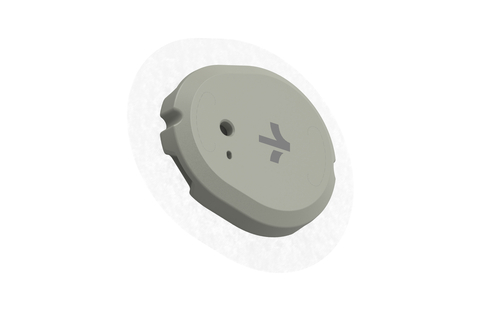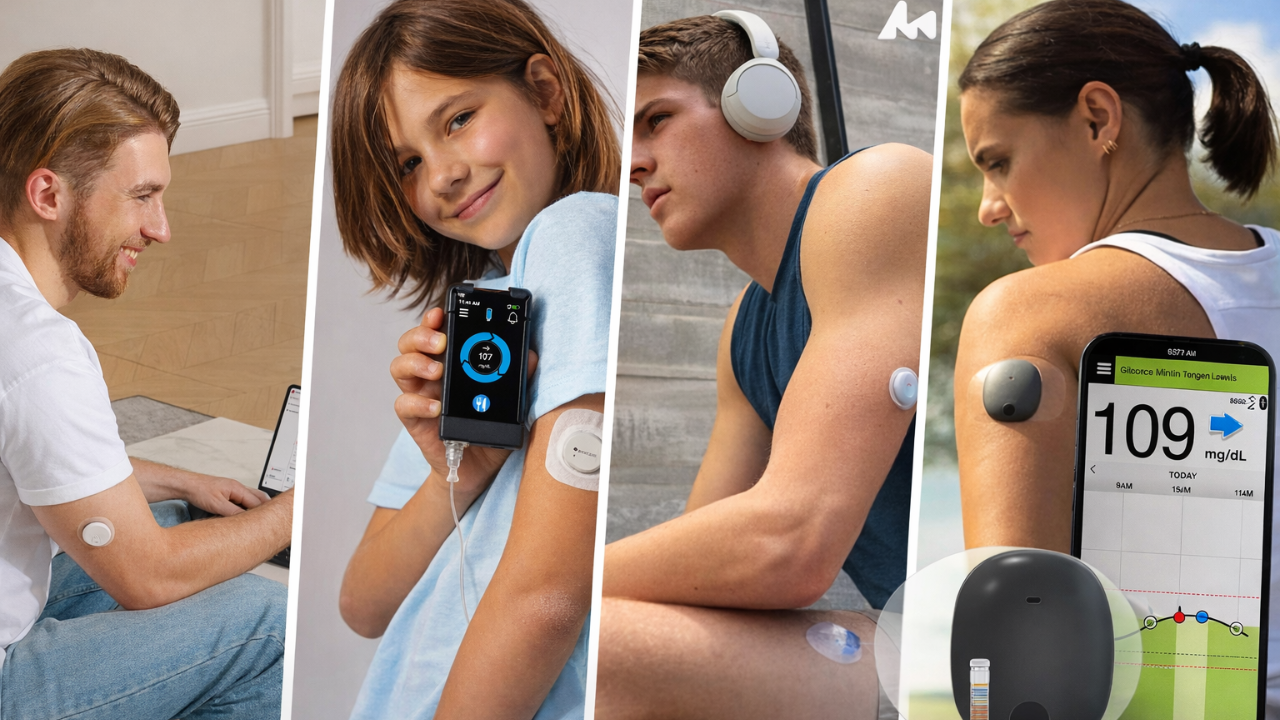#ATTD2024 updates (EN)
Mar 13, 2024
The curtain has closed on the world's largest congress dedicated to diabetes technology, which concluded last week with over 5000 attendees both in-person in Florence and virtually.
Amidst pleasant weather, attendees were treated to a plethora of exciting updates from leading medtech firms and scientists.
For those of us at Diabetotech, this marked our inaugural presence at the congress, where we proudly showcased our Diabetes Technology Expert Program.
While unable to attend the sessions in real-time, thanks to Kelly Close and her team and our virttual access to the congress, we didn't miss a beat, keeping pace with the latest developments.
Get Access To Updated Diabetes Technology Courses
In this blog, I'll highlight the five standout revelations that caught my attention:
- The rollout of Dexcom G7 direct-to-Apple Watch, commencing this month.
- FDA approval for Dexcom Stelo.
- Promising results of the dual glucose-ketone monitor from Abbott
- EVOLUTION trial: the Omnipod 5 fully closed-loop system is feasible
- CRISTAL trial: the MiniMed 780G is safe to use in pregnancy
Join me as we delve into these groundbreaking advancements reshaping the landscape of diabetes management.
1. Dexcom is launching its G7 direct-to-Apple Watch feature this month
Just one day before the ATTD event, Dexcom announced the FDA-clearance for the direct-to-Apple Watch functionality of the Dexcom G7.
The feature will be available this month in UK and Ireland, with wider availability in the first half of this year.
The Dexcom G7 sensors already have this functionality built into them, so all you need is an app update.
Dexcom will be the first CGM to have a direct-to-watch functionality, and we commend them for making this a priority.
- Direct-to-watch means that the Dexcom G7 sensor will send your glucose data directly to your watch.
- This means you'll have access to your glucose data even when you only have your watch with you, making it a great solution for exercising without your phone.
- If necessary, the data can simultanuously be sent to your phone and your insulin pump.
In the initial releases of the app, there will be no Share functionality from the watch.
- This means that parents cannot view theirs children's glucose data if the children only wear their Apple Watch, for example, during soccer.
- The Share function from the Apple Watch will be included in later updates of the app.
This feature is exclusive to the Dexcom G7 and not available for Dexcom G6, Dexcom ONE, or Dexcom ONE Plus,
and only for people who use an iPhone and Apple Watch, not for any other smartwatches.
Dexcom is also working on implementing this functionality for other watches, such as Garmin watches.
2. FDA-label for Dexcom Stelo

Also on March 5th, Dexcom announced that the Stelo CGM received FDA clearance.
The Stelo is indicated for adults (>18 years) who do not use insulin, and will be marketed for people with type 2 diabetes who don't use insulin.
- It is contraindicated for people with problematic hypoglycemia "since it lacks a predictive low alert".
- The Stelo app will focus on the unique needs of this population, helping users understand the connection between lifestyle and glucose values.
The Stelo sensor has the same form factor as the Dexcom G7.
- However, it can be worn for 15 days
- and only sends glucose data every 15 minutes instead of every 5 minutes.
- The company has not disclosed the Mean Absolute Relative Difference (MARD), but the FDA stated that the sensor performs similarly to other iCGMs.
Dexcom plans to launch this new sensor in the summer of 2024.
- In the US, it will be the first CGM that can be sold without a prescription (over-the-counter).
- In many European countries, prescriptions are not required for sensors.
3. Promising results of the dual glucose-ketone monitor from Abbott
We are looking forward to having access to a continuous ketone monitor (CKM),
- not only to reduce diabetic ketoacidosis,
- but also to enable the use of SGLT2 inhibitors in people with type 1 diabetes.
There is already one CKM commercialized by Sibionics, but we haven't seen any accuracy data.
And it's also quite expensive, costing 70 euros per 2 weeks.
We are especially excited about the combined glucose and keton monitor from Abbott, as it appears to be a logical upgrade from the current FreeStyle Libre 3.
At ATTD2024 we saw some data of this dual glucose-ketone monitor in people with type 1 diabetes.
- 23 adults with type 1 diabetes on an insulin pump wore the sensor, and to induce ketonemia, they suspended the insulin pump for six hours.
- The beta-hydroxybutyrate (BDB) monitoring of the CKM was compared to the BHB level from capillary blood (with a Precision Xtra meter) and from venous blood.
Although they haven't presented any accuracy data yet,
they demonstrated with two visual examples that the BDB monitoring of the sensor closely mirrored the blood BHB measurements.
Additionally, prof Jennifer Sherr (Yale University) also gave some insights in ketone monitoring of people with type 1 diabetes who suspend their insulin pump for 6 hours:
- Almost all people experienced a glucose level that rose to >250 mg/dl (13.8 mmol/l).
- Almost all (80%) people experienced a BHB level that rose to >1.0 mmol/l.
- There was a big variability in the rise of BHB (peak level 0.2-4.2 mmol/l), which did not depend on the starting glucose or duration of diabetes.
- And in 45-75% of people, BHB levels were >1 mmol/l while the glucose level was <240 mg/dl (13.3 mmol/l).
These insights might prompt us to reconsider
- the glucose threshold for doing a ketone measurement,
- and the ketone threshold that defines a clinically significant rise in ketones.
Prof Sherr mentioned that a recent subanalysis of people with type 1 diabetes using SGLT2-inhibitors showed that a ketone level of ≥ 0.8 mmol/l, led to a 3-fold increase in the risk of diabetic ketoacidosis.
In conclusion, here are the final remarks from the presentation:
"Continuous ketone monitoring may allow for early detection of metabolic decompensation and an impeding episode of diabetic ketoacidosis. This may encourage greater equity in use of advanced diabetes technologies, like automated insulin delivery which is the standard of care for individuals living with type 1 diabetes. And this may allow people with diabetes to have better tools to achieve glycemic targets while providing a safety net to help avoid diabetic ketoacidosis." - Prof Dr Jennifer Sherr, Yale University School of Medicine
We also love this video of Diabe_tech where Justin Eastzer talks to dr Mahmoud Kazemi from Abbott on
- how they think ketone monitoring could warn you that something is wrong with your insulin delivery even before glucose starts rising,
- and how they are aiming to show ketone measurements in the FreeStyle Libre app only when there is a problem.
To be fair, there is no timeline yet for this dual glucose-ketone monitor from Abbott, and they haven't decided on its name.
However, it's evident that it's in the pipeline and is of high priority for Abbott's development team.
4. EVOLUTION trial: the Omnipod 5 fully closed-loop system is feasible
We were very excited to see the first results of the next-gen Omnipod 5 algorithm presented at ATTD!
The EVOLUTION trial assessed Insulet's fully closed-loop algorithm in individuals with type 1 and type 2 diabetes in New Zealand.
9 adults with type 1 diabetes and 8 adults with type 2 diabetes wore the next-gen Omnipod 5 system without bolusing for 3 weeks.
- The Time In Range (TIR) in the adults with type 1 diabetes increased from 37% to 58%,
- and in those with type 2 diabetes, the TIR increased from 52% to 65%.
What stood out was the amazing treatment satisfaction expressed by these participants!
As one participant wrote:
"The system was freeing and empowering and let me get on with the rest of my life without thinking too much about injections".
Prof de Bock (University of Otago, New Zealand) concluded:
"I truly believe that Automated Insulin Delivery that is bolusfree and easy to use is the future for people with type 2 diabetes requiring insulin. It needs to be easy and burden-free. The results of this study will be used to continue to innovate."
We've seen many positive studies about Automated Insulin Delivery (AID) systems for people with type 2 diabetes.
It looks like they're focusing more on making these systems easier to use, especially when it comes to handling meals.
We're really excited about the idea of using fully automated systems like this for people with diabetes!
5. CRISTAL trial: the MiniMed 780G in pregnancy is safe

At ATTD, the results of the CRISTAL study were highly anticipated and read out by prof Benhalima (UZ Leuven, Belgium).
- This study compared 43 pregnant women with type 1 diabetes using the MiniMed 780G
- to 46 pregnant women with type 1 diabetes using a glucose sensor and either multiple daily injections (MDI) or an insulin pump.
The Time In Range during pregnancy (TIRp) was surprisingly not better in the group that used an AID system.
- This is believed to be due to the fact that the baseline HbA1c in both groups was <6.5%.
- It's also important to note that 80% of people in the control group wore an insulin pump with a low glucose suspend function.
The study did show that the MiniMed 780G was safe for use during pregnancy.
The MiniMed 780G also resulted in
- improved TIRp overnight,
- reduced TBRp,
- less hypoglycemia unawareness,
- less glycemic variability,
- and improved treatment satisfaction.
Although the study was not powered to assess obstetric and neoneatal outcomes, the data showed
- less excessive weight gain in pregnant women,
- and fewer admissions of babies to intensive care for hypoglycemia.
- The gestational age at delivery and the % of babies that were large for gestatinal age were similar.
Furthermore, we learned that 61% of pregnant women using the MiniMed 780G found needed to use "assisted carbs" with their meals, formerly known as "fake carbs," to override the safe meal bolus feature.
- On average, these women used 74% extra carbs during meals,
- initiating this practice around 19 weeks into gestation, on average.
These 5 insights from ATTD only scratch the surface of what was discussed at the conference!
Stay tuned for more updates delivered straight to your inbox!

And finally... Don't miss out on our exclusive ATTD offer from our booth!
Until March 15th, sign up for a 7-day free trial of the Diabetes Technology Expert Program and enjoy a 50% discount.
Our e-learning platform features over 16 hours of video content covering the most popular glucose sensors, insulin pumps, and automated insulin delivery systems.
You'll receive comprehensive device training, learn how to interpret reports, and discover strategies for managing hypo/hyperglycemia, illness, exercise, high-fat meals, and more.
Plus, access monthly Zoom Expert Meetings right from the convenience of your phone.
Don't let diabetes technology pass you by. Take control of your diabetes management with our one-stop platform for all diabetes technology education.
>> Click here to log in for your free courses!
Kind regards,







